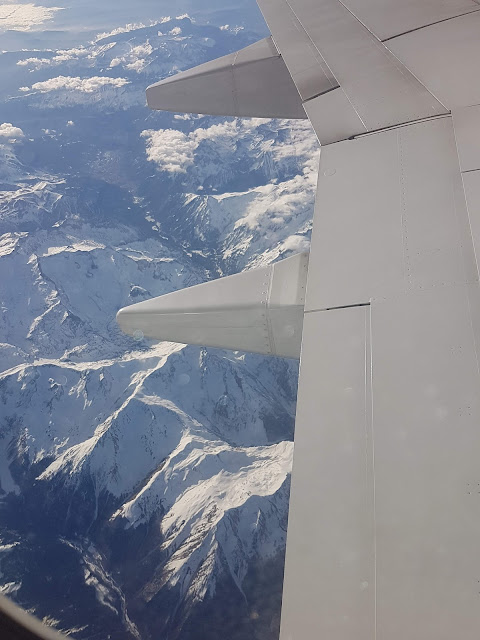Sevilla and Córdoba (April 2022)
Sevilla is 37 degrees. I didn´t expect this temperature. I already have mosquito bites lining my forearms and ankles, and I expect more to arrive. This hostel is (amusingly) called Room 007. There is nothing Bond-esque about it, expect maybe the balcony that looks over clustered buildings.
I had another interesting BlaBlaCar journey here. Our driver José gave us three passengers (a translator, a languages student, and a language teacher) an immediate talking point by mentioning that we were all linguists. Strangely, none of us took him up on this and instead we all had individual conversations with José, which were initiated by José. He asked me about Murcia, travelling, Brexit. We also talked about Mexico, Latin America, the rise of the far-right, Catalunya. I didn´t agree with some of his views e.g. Colombus was just a sailor who landed in another country. At one point I described Irish people as "maga" which he found hilarious. I've come to understand "maga" as a typically southern Spanish way of saying "nice" or "friendly", but it does also mean "magician", which may be why he was laughing. We dropped the translator off in a pueblo outside Seville. Myself and the languages student got out at the sweaty Santa Justa train station. I am now impatiently waiting for my phone to charge so I can go meet Marah and her friend.
Seville is sunny and beautiful, in a very traditional sense. It feels like a postcard, the kind of place that epitomises historical Spain. The Plaza de España is one of the most amazing structures I´ve ever seen. Under the big archways there are flamenco dancers and musicians, their clacks and claps echoing out onto the plaza. There are horse and carts trotting around the large tiled semi-circle, around which are shrines dedicated to each region of Spain. There´s a lot of French tourists here. "Tu mets la casquette!" a woman tries to force a three year old into a hat. He doesn´t want to wear the casquette.
Córdoba
Marah and I have a funny couple of days in Córdoba, a city I can only describe as the human encarnation of Duloc from Shrek. The historic toytown-esque centre is full of tourists and outside of that it is a bit of a ghost-town. The Mezquita (Córdoba's most celebrated landmark) made us slightly sad. In an architectural sense, it is beautiful. But what was once a mosque was half-destroyed and a cathedral was built over the top by Fernando III after the reconquista. Maybe I was wrong, but to my eye it seemed that little of the original mezquita remained.
The synagogue, which Marah visited, was the size of a large living room and the only reason it had survived centuries of religious persecution was because it had been disguised as a hospital for most of that time. These half-forgotten places exist throughout Spain. And sometimes it is frustrating when it feels like history isn't being approached in the right way. These monuments exist, but what discussions are we having about them? The same thought crossed my mind on seeing Columbus's elaborate tomb in Sevilla's cathedral.
Despite this, we had fun in Córdoba. We tried Spain's biggest tortilla, discovered a shared snobbery of fake Mexican food, went to a genuinely authentic taqueria, got struck by sudden 10 degree weather, and were attacked by pollinating trees on various occasions, all whilst humming Duloc's theme tune under our breath. The cordobense accent was like a mix of Murcian and Andalusian with some extra colloquial curveballs thrown in. We struggled to understand our host and most locals we encountered.





Comments
Post a Comment